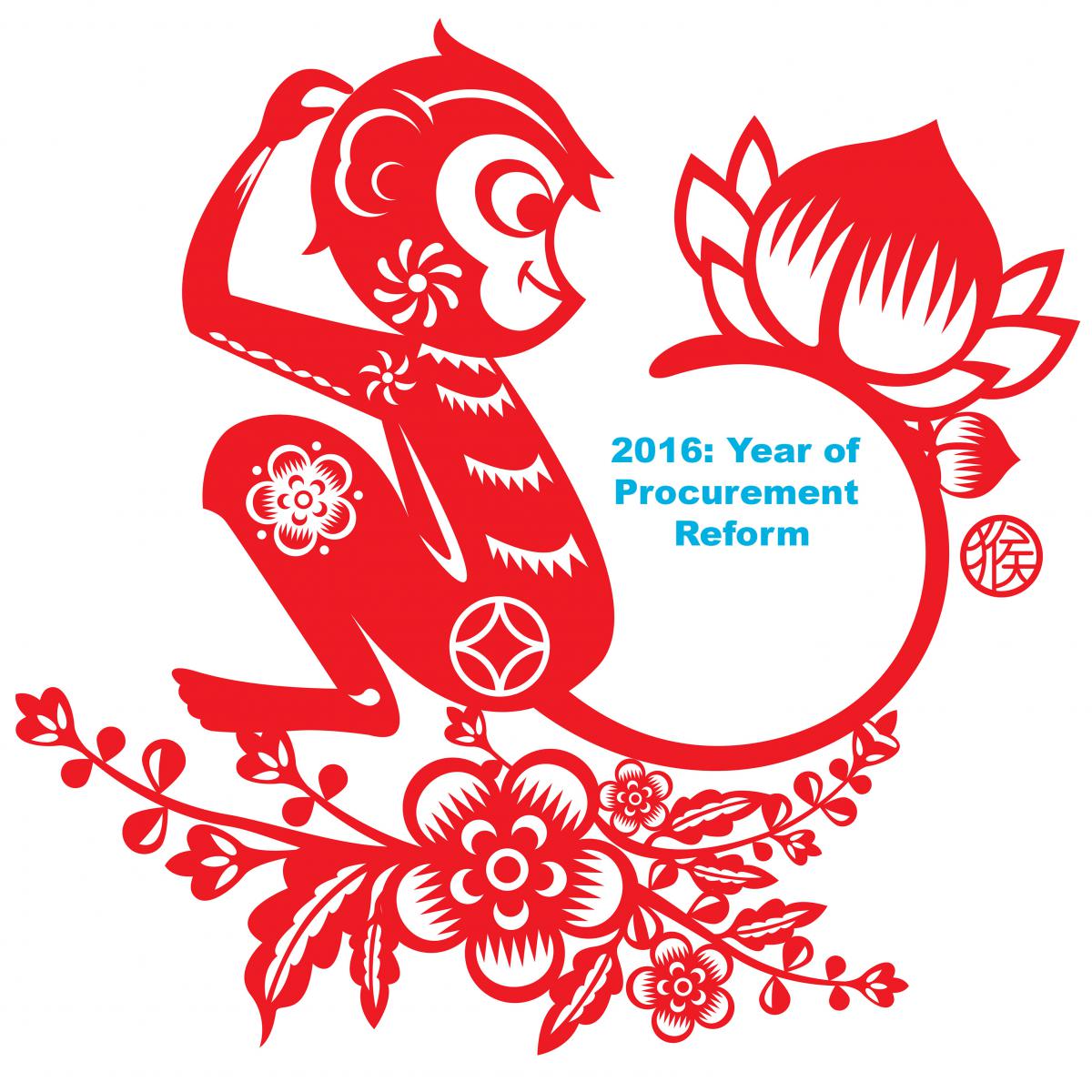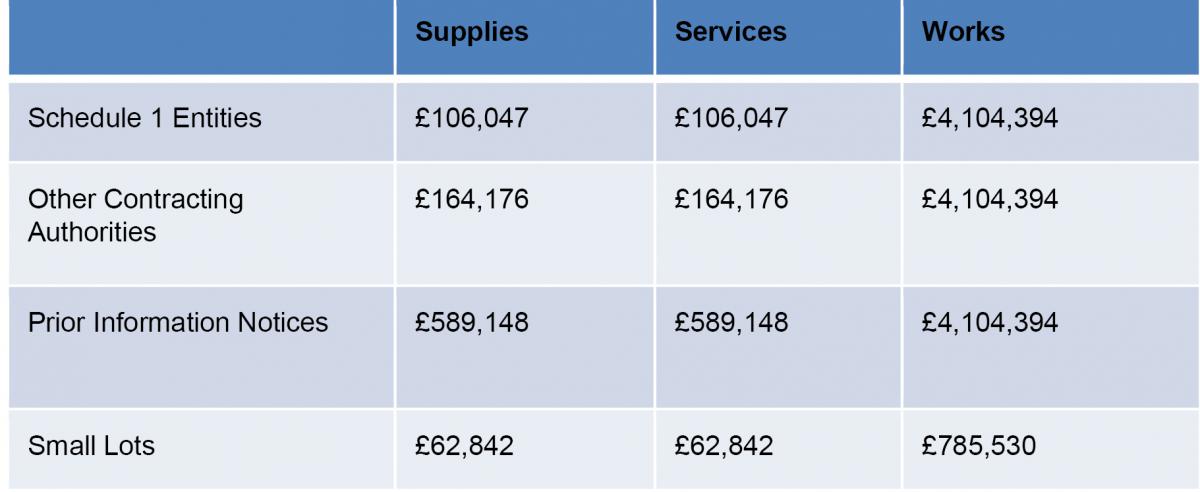 Today is Chinese New Year. 2016 will be the year of the Red Fire Monkey. People born in the year of the Red Fire Monkey are characterised as being quick witted, innovative and mischievous. For Procurement professionals 2016 is set to be known as the year of procurement reform for those working or doing business in Scotland. We might all need to be a little like the Chinese Red Monkey to manage the change that will finally be upon us. On 18 April the Public Contracts (Scotland) Regulations 2015 (the "2015 Regulations") will come into force – for the most part. A small number of regulations have delayed implementation dates. These regulations post-date the Scottish Governments Procurement Reform Scotland Act 2014 (the “2014 Act”) which has been waiting patiently in the wings. Its time has now come - it too will come into force on 18 April. In addition the Scottish Government has also published the Procurement Scotland Regulations 2016, which seek to build on some of the provisions of the 2014 Act.
Today is Chinese New Year. 2016 will be the year of the Red Fire Monkey. People born in the year of the Red Fire Monkey are characterised as being quick witted, innovative and mischievous. For Procurement professionals 2016 is set to be known as the year of procurement reform for those working or doing business in Scotland. We might all need to be a little like the Chinese Red Monkey to manage the change that will finally be upon us. On 18 April the Public Contracts (Scotland) Regulations 2015 (the "2015 Regulations") will come into force – for the most part. A small number of regulations have delayed implementation dates. These regulations post-date the Scottish Governments Procurement Reform Scotland Act 2014 (the “2014 Act”) which has been waiting patiently in the wings. Its time has now come - it too will come into force on 18 April. In addition the Scottish Government has also published the Procurement Scotland Regulations 2016, which seek to build on some of the provisions of the 2014 Act.
The 2014 Act applies to Regulated Procurements which have a value of over £50,000 for services and supplies, and a value of over £2,000,000 for works contract. We have previously published articles on the some of the key provisions of the 2014 Act and you can find them here and here. The 2015 Regulations seek to implement the new EU Procurement Directive in Scotland. This article will look at some of the key changes that contracting authorities should be aware of. We have planned for late March a series of comprehensive webinars that will look at the legal detail of these provisions in more detail.
EU level procurement only applies above a certain threshold. In January 2016, the thresholds changed and they are now set at the following levels:

The 2015 Regulations will therefore apply to contracts with a value in excess of these amounts. In terms of some of the key changes in the Regulations, some of the most notable are as follows:
- Conflicts of Interest - Regulation 25 Contracting authorities must take appropriate measures to prevent, identify and remedy conflicts of interest arising in the conduct of procurement procedures. Conflicts are specifically stated to include any situation where relevant staff have either directly or indirectly a financial, economic or other personal interest which might be perceived to compromise their impartiality and independence. This means that Contracting Authorities need to review your processes to ensure that Conflicts of Interest in procurement processes are identified and dealt with.
- The Regulations introduce two new procedures:
- The Competitive Procedure with negotiation; and
- Innovation Partnerships
These are likely to add flexibility to procurements for the public sector. From a private sector perspective this is likely to mean two new processes to get to grips with:
- The rules for using the Negotiated Procedure without prior publication of a notice have changed. The new rules are set out at Regulation 33. Contracting Authorities often sought to rely on the extreme urgency provisions under the old procurement regime and this, in particular, will be more difficult under the new regime as the Regulations expressly state that the reasons cannot be attributable to the Contracting Authority.
- The 2015 Regulations emphasise the importance of division of large procurements into lots with a view to ensuring better access for SMEs, and the new reporting requirements mean that reasons must be recorded where the Contracting Authority opts not to utilise lots.
- The 2015 Regulations provide for the use of the European Single Procurement Document at Regulation 60, which is intended to make the PQQ process easier, and to standardise it across Europe. A standard form version of the ESPD is now available online following the implementation of Commission Implementing Regulation (EU) 2016/7.
- The rules relating to modifications of contracts during their term, which originated in case law, have been codified and are set out at Regulation 72. This is intended to make it easier for authorities to determine whether or not a variation is actually a separate, new contract, which should be tendered pursuant to the 2015 Regulations.
- Although the new EU Directive, and the 2015 Regulations, remove the concept of Part B Services, they do introduce a light touch regime for Social and other specific services. This also ties into provisions in the 2014 Act will be directly relevant to many contracting authorities.
This is only a high level look at a small number of the major developments contained in the 2015 Regulations and the public sector, in particular, will have to adapt quickly to a lot of change. There are also additional provisions relating to records and reporting, changes to the mandatory exclusion grounds and codification of a number of other concepts that flowed out of case law including codification of the Teckal in-house exemption and new rules relating to horizontal co-operation.
Setting these changes against the wider backdrop of Procurement Reform; the 2015 Regulations and the 2014 Act implement two distinct layers of procurement reform, both of which come into force on the same date. There are a number of significant changes and new responsibilities across the legislation; and the public sector will have to adapt to both new regimes simultaneously. This is likely to mean a period of intense activity for procurement professionals as organisations move to update internal policies, revise standing orders and prepare their first Procurement Strategy.
Many of the topics mentioned above, and the changes in the 2014 Act require detailed consideration and, as such, over the next few weeks we will be running a series of comprehensive webinars on the key provisions of both the 2015 Regulations and the 2014 Act and what they mean for you. If you are interested in registering for any of our webinars, you can find out more here.